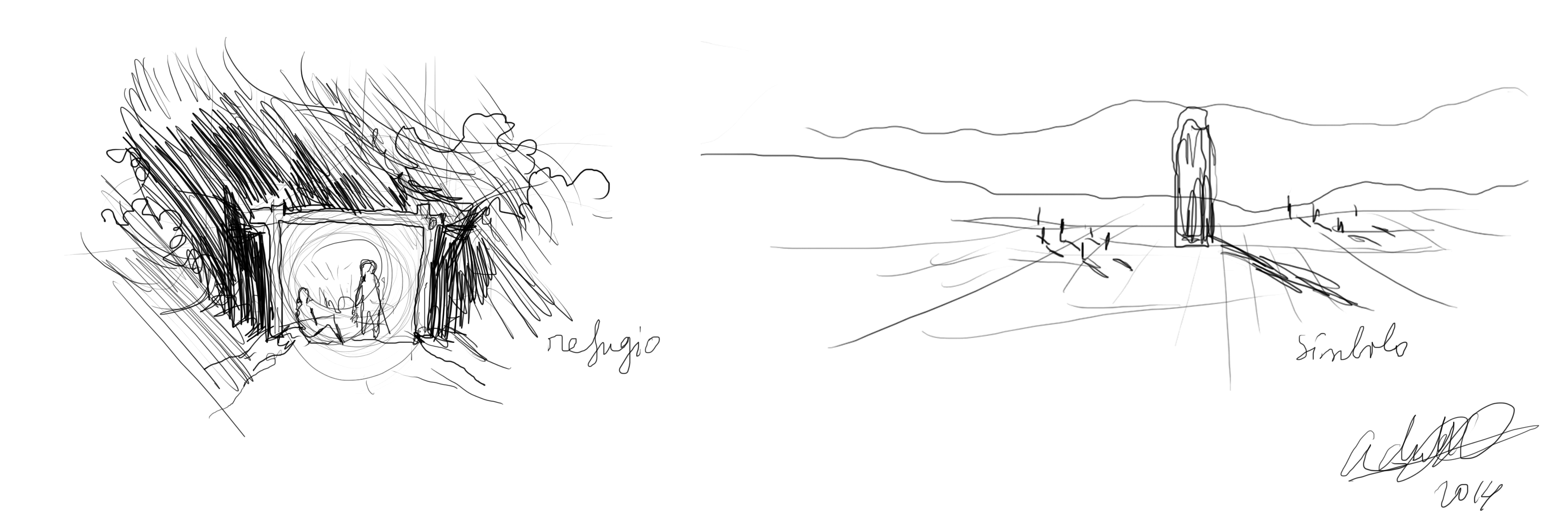
Marrying is overrated
The marrying of an individual to their immediate environment dates back to the Neolithic times, to the days when we abandoned the mountain caves and started building instead of simply occupying. The fertile valleys watered by rivers weren’t able to accommodate the type of holes we used so much for shelter. We needed to recreate this safe environment, so the overlapping of matter in a similar way to our previous model on the base plane, seemed like the best solution.
But, why do we seek out shelter? The answer seems obvious, faced with the hostile, violent world outside, but in our subconscious, many believe that the shelter they found in a cave is an earthly reminiscence of the mother’s womb. Who, as a child hasn’t hidden inside a wardrobe within our homes and, more recently, wrapped ourselves tightly our sheets during a warm summer just to get to sleep?
The hut represents both the origin of architecture and one of its sides, as José Ramón Alonso Pereira states in an ‘Introduction to the History of Architecture’. The flip side is that of architecture created as a symbol, of which we find the oldest example in the menhir.
And so, the duality between hut and menhir, sheltering and showing, privacy and communication, essential and auxiliary respectively concerns the whole of architecture throughout history. However, we mustn’t forget that the primary architectural need is still that of shelter and in our hyper-connected society the auxiliary has replaced the essential.

In reference to the title, with the establishment of the family unit (marriage), it was necessary to define a place (home). There is an interesting similarity between both the verb and noun in Spanish – ‘casarse’ (to marry) and ‘casa’ (home). The growing complexity of society has led to the question of size, which still matters today, through which power and superiority are expressed. A clear example is the medieval town of San Gimignano, the first-ever Manhattan, nestled at the heart of Tuscany. It’s almost comical to imagine the vassals of different lords fighting and defending their fortresses with just a few metres between them, then greeting each other the next day at the market.
The tie between humanity and a plot of land exists to this day. We have a word for this: property. We need a place to call our own, to defend it no matter what, causing countless conflicts and wars.

The unspoken architecture of inhabiting, which exists purely to fulfil this function, is hard to find nowadays. We become noisier every day, showing off our power just because the views from the bay are so worth it. It’s paradoxical that the functionality of a home ended up last on the list of priorities when building the newer residences that decorate our coastlines.
Maybe we should rethink such a possessive concept. If the Spanish people’s attachment to a house of their own was not so strong, maybe the crisis would have not hit so hard. Other countries are already changing this way of thinking and are moving towards a more nomadic way of life. Maybe it’s time to travel a bit lighter. More huts and fewer menhirs.
Text: Adrián Marmolejo / Illustrations: Adrián Marmolejo / Originally written for AAAA Mazane #2 House / November 2014
